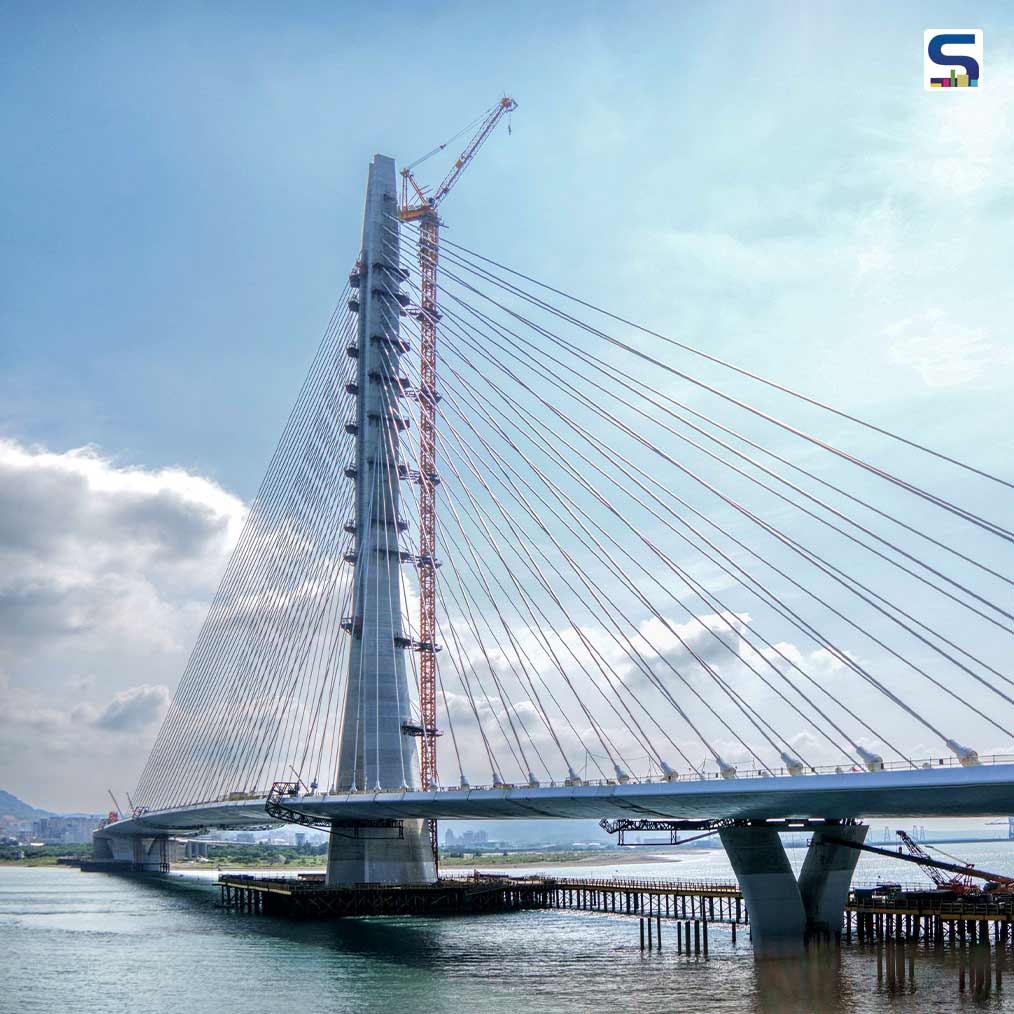
Taiwan has reached a major milestone in one of its most ambitious infrastructure projects with the completion of the main structure of the Danjiang Bridge, designed by the renowned UK-based Zaha Hadid Architects. The installation of the final steel deck segment has officially connected the eastern and western banks of the Tamsui River estuary for the first time, confirming its scheduled opening on 12 May 2026. Once operational, the Danjiang Bridge will become the world’s longest single-tower, asymmetric cable-stayed bridge, marking a significant achievement in both engineering and architectural innovation. Know more about this structural wonder and a monumental tribute to Zaha Hadid’s legacy on SURFACES REPORTER (SR).

Stretching a total of 920m across the river mouth near Taipei, the bridge’s defining feature is its soaring 200m central mast.
A structural masterpiece
The Danjiang Bridge project is especially notable as one of the last major works personally overseen by Zaha Hadid before her passing in 2016. Announced in 2015, the bridge reflects her characteristic design language of fluid, sculptural and dynamic designs, while also meeting complex infrastructural and environmental challenges. Stretching a total of 920m across the river mouth near Taipei, the bridge’s defining feature is its soaring 200m central mast. This mast supports two primary spans, 450m to the west and 175m to the east, using an asymmetric fan arrangement of cables. The result is a distinctive silhouette that combines structural efficiency with Hadid’s signature sweeping geometries.

The mast’s placement, the deck’s height above the water and the cable configuration were all carefully calibrated to ensure unimpeded passage for river traffic, preserve popular sunset viewpoints along the Tamsui River and to minimise the impact on the sensitive estuarine ecosystem.
According to Zaha Hadid Architects the mast and deck geometry were refined through advanced 3D modelling and a detailed mapping of the estuary. The mast’s placement, the deck’s height above the water and the cable configuration were all carefully calibrated to ensure unimpeded passage for river traffic, preserve popular sunset viewpoints along the Tamsui River and to minimise the impact on the sensitive estuarine ecosystem. The single-tower strategy reportedly also reduces disturbance to the riverbed by aligning with stringent environmental protection requirements for the area.

Its Y-shaped concrete columns anchor the structure near the shore, while the main tower’s asymmetrical cable layout enhances stability during severe winds and seismic activity.
Engineering marvel
The Danjiang Bridge will reportedly become Taiwan’s first bridge fitted with a full damper system, enabling it to resist earthquake forces up to intensity 7, which is the highest level on Taiwan’s seismic scale. Its Y-shaped concrete columns anchor the structure near the shore, while the main tower’s asymmetrical cable layout enhances stability during severe winds and seismic activity. These features ensure resilience in one of the world’s most earthquake-prone regions.

The Danjiang Bridge will reportedly become Taiwan’s first bridge fitted with a full damper system, enabling it to resist earthquake forces up to intensity 7, which is the highest level on Taiwan’s seismic scale.
Functionally, the bridge is expected to transform regional transportation. By directly linking the Tamsui and Bali districts and integrating with four major highway networks, it will relieve long-standing congestion on local roads and significantly reduce pressure on the existing Guandu Bridge, located 5km upstream. This improved connectivity will play a vital role in northern Taiwan’s infrastructure development.

The Danjiang Bridge project is especially notable as one of the last major works personally overseen by Zaha Hadid before her passing in 2016.
With the main structure now complete, the project enters its final phase, which includes asphalt paving, lighting installation, cable inspections and rigorous load testing. The bridge will reportedly include dedicated pedestrian and cycling lanes as well to ensure safe and accessible public use upon opening.
Image credits: Paddy Chao